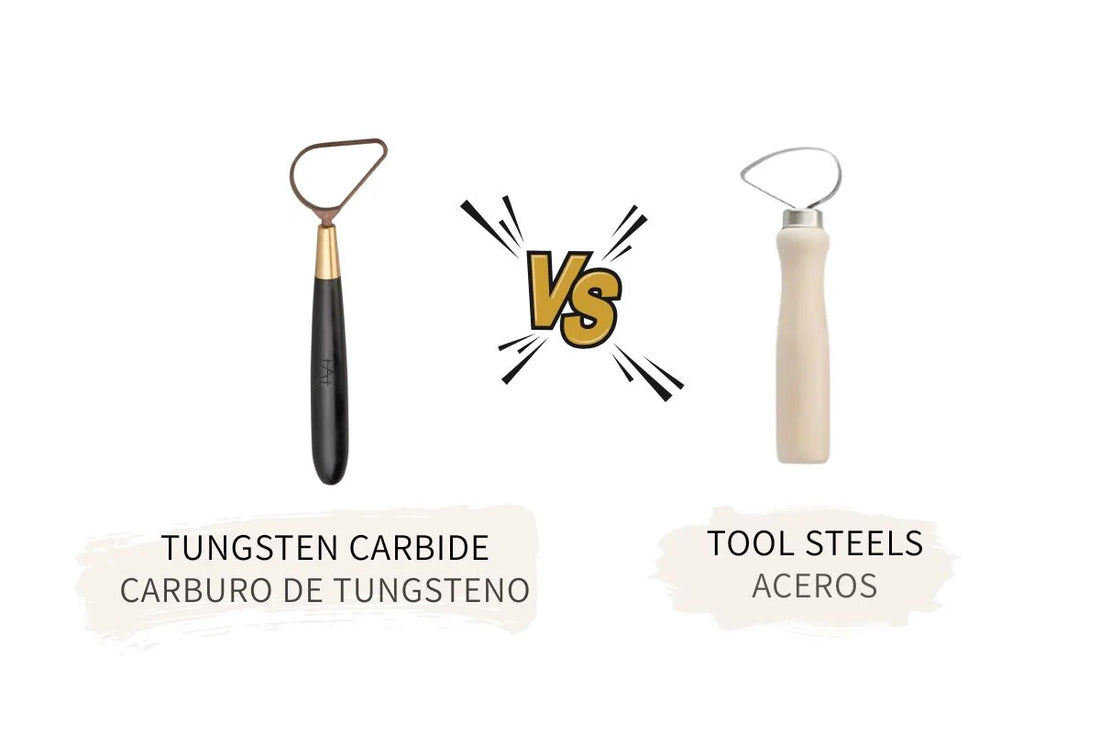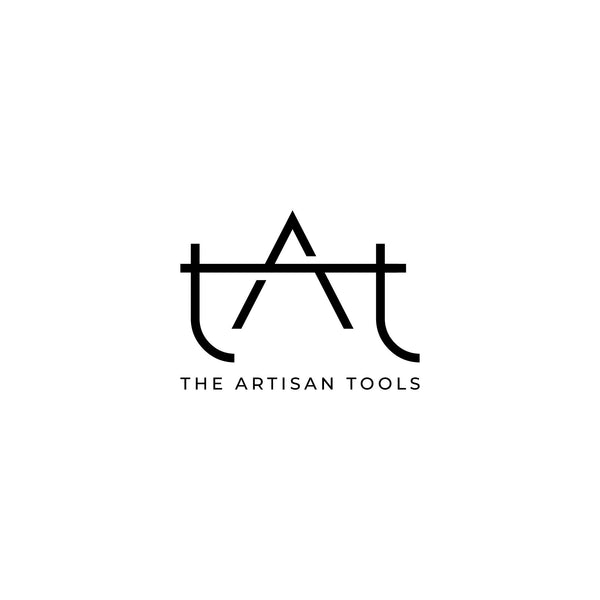
Tungsten Carbide Trimming Tools vs. Steel. Which one is best?
Share
Carbide vs. Steel Trimming Tools
If you throw regularly, the tool makes all the difference. In this quick guide we’ll compare carbide trimming tools (loop tools) with common steel ones (including stainless steel). You’ll see when it’s worth the investment, how it affects the finish, and what maintenance each option needs.
What is tungsten carbide and why does it matter?
Tungsten carbide (WC) is an extremely hard, wear-resistant compound. In pottery trimming tools, the carbide blade is typically brazed onto the tool body. The result? An edge that lasts for years, with clean cuts and no sharpening required.
| Criterion | Tungsten Carbide (WC) | Steel / Stainless Steel |
|---|---|---|
| Edge retention | Very high; keeps a fine edge through long sessions | Medium; dulls sooner, needs frequent sharpening |
| Finish on stoneware/porcelain | Very clean, less “chatter” and burrs | Can vibrate and leave marks if the edge loses bite |
| Corrosion resistance | Does not rust | Stainless: good; carbon steel: rusts if not dried |
| Maintenance | Infrequent; refresh with a fine diamond plate | Frequent; regular sharpening needed for a good finish |
| Price | Higher | More affordable |
| Brittleness | WC edge can chip if dropped | Lower risk of chipping |
| Learning curve | Very rewarding with correct technique | Forgiving; ideal for beginners on a budget |
Clear advantages of carbide in pottery trimming tools
-Edge that lasts a very long time
The extreme hardness of carbide keeps its bite for years. If you work with stoneware or porcelain, you’ll certainly notice the consistency of the cut..
-Finer finish with fewer marks
Carbide reduces vibration, leaving more uniform walls.It’s especially noticeable on bases and thin parts for example.
-Rust resistance
The carbide edge won’t rust. (but Stainless-steel tools resist rust as well
When to choose carbon steel or stainless steel
If you dont have a big budget or you are just starting, steel tools are a good option. They’re not bad and cost very little. They’re great for learning, and later you can upgrade to tungsten carbide. If you run a classroom or shared studio, steel is also safer: if a carbide tool is dropped, it often chips or snaps (it’s very hard but not flexible, so sharp impacts can break it).
Some people also like to resharpen and experiment with different geometries: in that case, steel is better. Carbide can’t really be sharpened or reshaped unless you use diamond abrasives, and even then it’s not as easy to re-form because of its hardness.
Trimming tool maintenance
-If you use steel: dry it well so it doesn’t rust.
-If you use steel: sharpen the loop from time to time with a grinding stone, file, or similar
-If you use carbide: be careful not to drop it or hit it hard (the cutting edge will break)
-If you go with steel in the end: try to choose stainless (it still wears faster, but at least it won’t rust).
If you want to take a look at the most common carbide trimming tool shapes, you can click here.
Thanks for reading and see you in the next post!

